

 This is number 150 of the BKWine Brief! Who would have thought that when we started one hundred and fifty issues ago!?
This is number 150 of the BKWine Brief! Who would have thought that when we started one hundred and fifty issues ago!?
Revolution in the New World?
We have just come back from a wonderful tour in South America. You will hear more about that in coming Briefs. We spent two weeks in Chile and Argentina and, of course, we tasted a number of wines, over 100 in fact.
They were of all different kinds. Carmenère in Chile and Malbec in Argentina of course but also plenty of others. One thing stood out. They were less “New World:ish” than a few years ago. They were more restrained, fresher, drier. In our opinion overall quite simply better.
The oak rarely seemed excessive. Just as in France and other Old World countries today the winemakers that we met stressed that they are not looking for too much oak aromas. The oak should only be a support for the wine.
We did not see any over-extraction. No jaminess. No vanilla bombs. Elegance seemed to be the keyword all over.
Is there perhaps a revolution happening in the New World?
Is the same thing happening in South Africa? We will check that next week since we are about to pack our bags to go wine touring to southern Africa’s most exciting wine producers.
By the way: “New World” quite is very relative. Vines arrived in South America in the 1540s, well before the Dutch drained parts of Medoc and the swamps that were Medoc was planted with vines. And South Africa recently celebrated 350 years of wine-growing.
If you want to judge for yourself it can be good for you to know that both South America (Chile & Argentina) and South Africa will be on our wine tour program in February-March 2017.
All our travelling at the moment has made it a bit difficult to keep up with the writing so this month’s Brief is shorter than usual. We’ll be back next month with more.
Britt & Per
PS: Recommend to your friends to read the Brief!
What’s on at BKWine Tours
- South Africa, February 26 – March 7, 2016
- Bordeaux, April 20-24, 2016
- Champagne, September 14-18
- Bordeaux, September 28 – October 2
- Douro Valley, October 12-16
For more information please contact us on email or on phone (we’re on French time), or go to our wine travel site on www.bkwinetours.com!
We also make custom designed wine tours – on-demand tours for you and a group of friends, for your company (maybe to scout new winegrowers?), for a special event… We can combine winery visits and wine touring with other activities: gastronomic workshops, visit to an oyster farm, truffles hunting, cheese making, and more. More info on the custom designed and bespoke BKWine wine tours and travel here!
Wine tours in Finnish: We also do wine tours in Finnish. And in German, Norwegian, Spanish… Do you want the latest news and updates on our wine travel activity? Subscribe here! (Second alternative BKWineTours.com)
Do you want the latest news and updates on our wine travel activity? Subscribe here! (Second alternative BKWineTours.com)
From the World of Wine
Cairanne finally upgraded to AOP
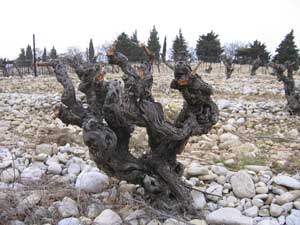 Cairanne has finally been upgraded and has now its own appellation. This means that the producers can now put only Cairanne the label instead of the Cotes du Rhone Village Cairanne. Cairanne has long been one of the best villages in the Cotes du Rhone appellation, with growers like Marcel Richaud, Domaine Alary, Domaine Aeria, Domaine Brusset and Domine de l’Oratoire Saint Martin. The Cairanne producers applied for the AOP status in 2008.
Cairanne has finally been upgraded and has now its own appellation. This means that the producers can now put only Cairanne the label instead of the Cotes du Rhone Village Cairanne. Cairanne has long been one of the best villages in the Cotes du Rhone appellation, with growers like Marcel Richaud, Domaine Alary, Domaine Aeria, Domaine Brusset and Domine de l’Oratoire Saint Martin. The Cairanne producers applied for the AOP status in 2008.
The appellation will apply to both red and white wine. 95 % of the production in Cairanne is red wine from Grenache, Syrah and Mourvèdre. The white wine is made of Grenache Blanc, Clairette, Roussanne, Marsanne and Viognier. In total Cairanne AOP covers an area of a little over 900 hectares. Read more on decanter.com.
A changing Rioja is making a comeback with terroir and vineyards
Rioja is slowly but surely making a comeback on the world market. However, for the comeback to be a success certain producers think that things must change. But the mills grind slowly in Rioja. Producers had to wait a long time for permission to lighten up their white Rioja with Sauvignon blanc, Chardonnay or Verdejo.
Now it seems that the next step in Rioja’s “modernization” will go faster. Will the producers be allowed to mention names of villages and names of single vineyards on the label? A Rioja today is either a joven, a crianza, a reserva or a gran reserva. The identity of the wine is thus determined based on how long the wine has been aged, in barrel and in bottle. The label can state Rioja Baja, Rioja Alta or Rioja Alavesa. A more narrow geographical indication is currently not allowed. But there is hope that it soon will be. Many producers are keeping their fingers crossed. We are not surprised; the important word in the wine world today is terroir. Read more about the changes in Rioja on insiderioja.wordpress.com
Lower the copper doses or not in the vineyard?
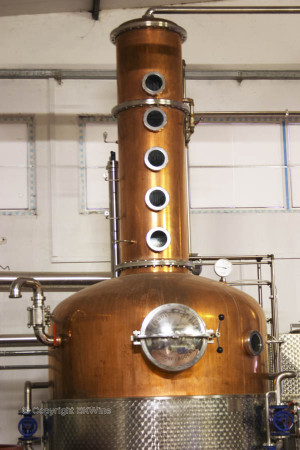 The copper doses are a constant headache for organic growers. The French authority ANSES (a food and health authority) and the European Commission want to reduce the permitted level from 6 kilogram per hectare and year to 4 kilo The organic growers say that they are not able to cope with such a reduction.
The copper doses are a constant headache for organic growers. The French authority ANSES (a food and health authority) and the European Commission want to reduce the permitted level from 6 kilogram per hectare and year to 4 kilo The organic growers say that they are not able to cope with such a reduction.
On February 17, organic wine producers gathered in Bordeaux to discuss new technology, but also to get answers from the authorities concerning their plans for the copper levels. But they got no answers. The organic growers now fear that the uncertainty will mean that some producers will be afraid to start their conversion to organic farming. Copper is mainly used to fight the fungal disease downy mildew.
During the past eleven years organic estates in Burgundy have used an average of 4.4 kilo of copper per hectare and year. Severe mildiou years like 2008, 2010 and 2012 between 25 and 50% of the producers used more than 6 kilos. As the rules say 30 kilograms of copper per hectare spread out over five years, it is possible to go over the 6-kilo limit some years. Read more on vitisphere.com.
New on the wine travel program
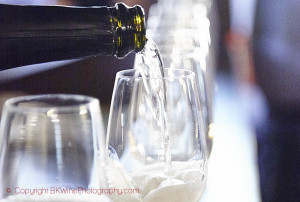 We have some news for the autumn travel program, a new destination, as well as some classics.
We have some news for the autumn travel program, a new destination, as well as some classics.
The new destination (i.e. new on the English language program; we’ve done it for many years for Scandinavians) this year is:
- Champagne, September 14-18, 2016, a fantastic occasion to discover this both exclusive and trendy district for bubbly wine in France
The classics that return are:
- Bordeaux, September 28 – October 2, 2016
- Douro Valley, October 12-16, 2016
We can also confirm that both Chile-Argentina in South America and South Africa will be back on the program in February and March 2017. Keep an eye open for the full program later this spring.
We are also thinking of adding New Zealand at a later date, exactly when is TBD. If you are interested in this please get in touch so that we can discuss the details.
Book your tour now!
How to describe a wine = gobbledygook?
In last brief we wrote about how to describe a wine in a way that makes people understand what you mean. We have received some comments from readers that we would like to share with you. A reader from Sweden tells us about an English wine writer who many years ago came to Sweden and was asked to review all the white wines at Systembolaget (the state monopoly). One wine was described like this: “This wine is ideal for serving at a funeral dinner, because it provokes a fitting mood of sorrow and grief.”
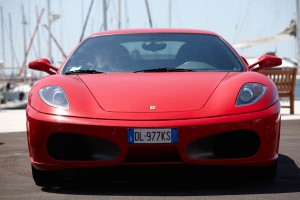 Another reader writes about when he visited Domaine de Montille in Volnay. De Montille talked about modern wines and he described them as being “broad” as opposed to his own wines, that he considered being “tout en longeur”, wines that express themselves “lengthwise”. Tout en longeur is something we hear from wine producers quite often. Meaning the wine stays with you a long time. The broad wines attack you full throttle and then they are gone.
Another reader writes about when he visited Domaine de Montille in Volnay. De Montille talked about modern wines and he described them as being “broad” as opposed to his own wines, that he considered being “tout en longeur”, wines that express themselves “lengthwise”. Tout en longeur is something we hear from wine producers quite often. Meaning the wine stays with you a long time. The broad wines attack you full throttle and then they are gone.
Yet another reader, French this time, remembers a Meursault 1972. It was, he recalls, “smelling of something like old leather and sweat” and it inspired him to the following description: “taxi de la Marne, banquette avant” (free translation: Paris taxi, front seat). For another very (too?) old red burgundy: smelling of wilted rose and stale perfume, he came up with this colourful description: “sofa de bordel parisien en velours rouge, fin du XIXe siècle”. A lively fantasy sometimes helps.
Even better Grenache thanks to Rhône research
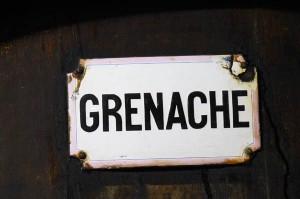 Grenache is one of the world’s most widely grown grape varieties. And one of our favourite grapes.It is found mainly in southern France and in Spain (Garnacha), but also in several other countries such as South Africa, Chile, and the United States. Everywhere there is a growing interest in the grape. It even has its own day. Next Grenache day is 16th of September 2016. Don’t forget!
Grenache is one of the world’s most widely grown grape varieties. And one of our favourite grapes.It is found mainly in southern France and in Spain (Garnacha), but also in several other countries such as South Africa, Chile, and the United States. Everywhere there is a growing interest in the grape. It even has its own day. Next Grenache day is 16th of September 2016. Don’t forget!
In the southern Rhone Valley, near the town of Orange, there is a conservatory with 350 clones of Grenache mainly from old vines in the Rhone Valley but also from Sardinia and Spain. Here the researchers study the various clones to select those that are resistant to certain diseases or give a low yield.
Recently the conservatory has identified a clone with small grapes that has several interesting properties: low yield, insensitivity to coulure and botrytis, relatively low alcohol content (13-14%, low for Grenache), high levels of anthocyanin. The clone is now being multiplied. Read more on mon-viti.com.
Our official press release on all the wine tours in the autumn
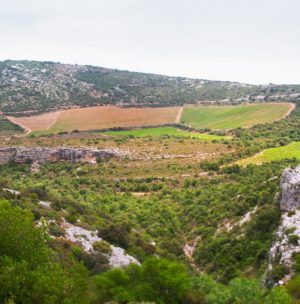 We would very much like to keep press and media even better informed of what we do but it is not always easy to find the time. So most often we have to settle for sending a press release. That can also be something of interests if you want to have a quick overview of what is in the pipe. We recently published the press release about the coming season’s wine tour on our travel blog:
We would very much like to keep press and media even better informed of what we do but it is not always easy to find the time. So most often we have to settle for sending a press release. That can also be something of interests if you want to have a quick overview of what is in the pipe. We recently published the press release about the coming season’s wine tour on our travel blog:
“BKWine has just launched the autumn / fall wine tour program. It features three very different tours: Bordeaux and also Champagne in France, and the Douro Valley in Portugal. The Champagne program is an entirely new destination on BKWine’s English language schedule. Full details are available on BKWineTours.com.”
Read more on BKWine’s Travel Blog: New autumn wine tours from BKWine: Bordeaux, Champagne, Douro Valley.
Lots of pictures and videos from the wine regions – on Facebook
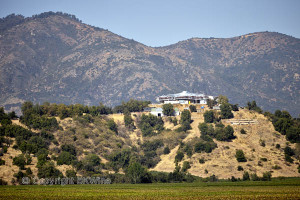 Most wine regions are beautiful, have charming landscapes. Actually, I should say “all” and not “most”. Pictures and videos can be an inspiration and can give you a better feeling for different regions. We publish quite a lot of photos and clips on our different Facebook pages. That can also be an inspiration and information for you if you are thinking about coming on one of our tours. But if you are not on Facebook you can’t see it. They’re not available without an FB account.
Most wine regions are beautiful, have charming landscapes. Actually, I should say “all” and not “most”. Pictures and videos can be an inspiration and can give you a better feeling for different regions. We publish quite a lot of photos and clips on our different Facebook pages. That can also be an inspiration and information for you if you are thinking about coming on one of our tours. But if you are not on Facebook you can’t see it. They’re not available without an FB account.
But there is a way to get around it. You can have an account on Facebook, making it possible to see all, but with “settings” that makes your account invisible to others. We have written a short explanation on how to do it. Take a look at our article on BKWine’s Travel Blog: See our travel updates on Facebook without being seen yourself.
Here are two of our Facebook pages they might be of interest to you:
- BKWine Wine Tour Chile Argentina – if you are curious to know more about wine travel in South America. “Join” the group and you will see more updates.
- BKWine Tours – with information, pictures, and videos on all wine regions that we travel to. “Like” the page and you will get info from it in your timeline. You can even choose “see first” with the down arrow on the like-button.
Natural Wines At Their Best: Jean-Louis Tribouley From Roussillon | Britt on Forbes
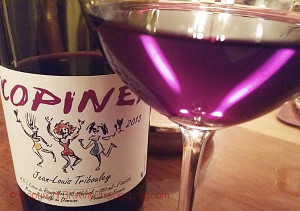 Natural wines can be many things. They can be undrinkable, barely drinkable and they can be extremely delicious. Like the natural wines from Domaine Tribouley, run by talented Jean-Louis Tribouley. He created his domain in the small village called Latour de France in Roussillon in 2002. This is southern France, not far from the Spanish border. The summers are hot but Jean-Louis manages to have a tremendous freshness in his wines. This is in part thanks to his old vines.
Natural wines can be many things. They can be undrinkable, barely drinkable and they can be extremely delicious. Like the natural wines from Domaine Tribouley, run by talented Jean-Louis Tribouley. He created his domain in the small village called Latour de France in Roussillon in 2002. This is southern France, not far from the Spanish border. The summers are hot but Jean-Louis manages to have a tremendous freshness in his wines. This is in part thanks to his old vines.
Read more on Britt’s article, originally published on Forbes.com, on BKWine Magazine: Delicious natural wines from Jean-Louis Tribouley | Britt on Forbes.
Favourites and trends in Alsace
Something new happening in Alsace? Yes, is my answer to that question after my visit to the annual wine fair in Stockholm arranged by Vins d’Alsace in cooperation with Sopexa. 28 exhibitors / producers, both old and new for Sweden, left many impressions which I would summarize in:
- Very varied wine styles
- Broadening of the range
- more grand cru wines
- Crémant d’alsace almost everywhere
- Pinot Noir wines made by many producers
- Increasing share of organic and / or biodynamic wines
Read more on this, plus some selected favourites, in Carl-Erik Kanne’s article on BKWine Magazine: Favourites and trends in Alsace.
Favourite picks from the Altia wine range
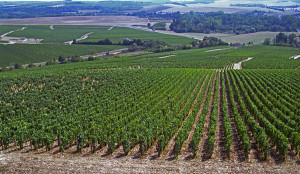 “I wandered into the tasting room with an open mind, rather poorly briefed, but with great enthusiasm. Just like I always feel when there’s wine on the program. Concentrating solely on the wines. I am anything but accustomed to tasting copious amounts of wine on a far from optimal “exhibition floor” amongst hordes of people without the possibility to sit down in peace and quiet with the wines tasted. I really admire those who can do the wine justice in this way.”
“I wandered into the tasting room with an open mind, rather poorly briefed, but with great enthusiasm. Just like I always feel when there’s wine on the program. Concentrating solely on the wines. I am anything but accustomed to tasting copious amounts of wine on a far from optimal “exhibition floor” amongst hordes of people without the possibility to sit down in peace and quiet with the wines tasted. I really admire those who can do the wine justice in this way.”
Tasting wines at a wine show can be a challenge. BKWine’s reporter in Gothenburg, Mattias Schyberg, dived right in when the Finnish wine import and distribution giant Altia Corporation came to Gothenburg to present their full range of wines to the press and restaurant people. Here are his favourite picks with some added bonuses. Read more on BKWine Magazine: Favourite picks from the Altia wine range.
Don’t be an egoist! Share with your friends and other wine enthusiasts! Forward the Brief to your friends! Suggest that they sign up for a free subscription !
© Copyright BKWine






